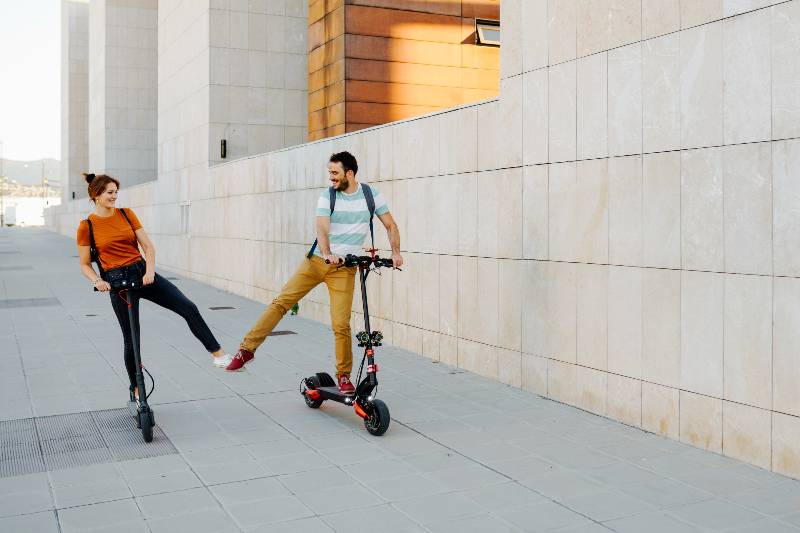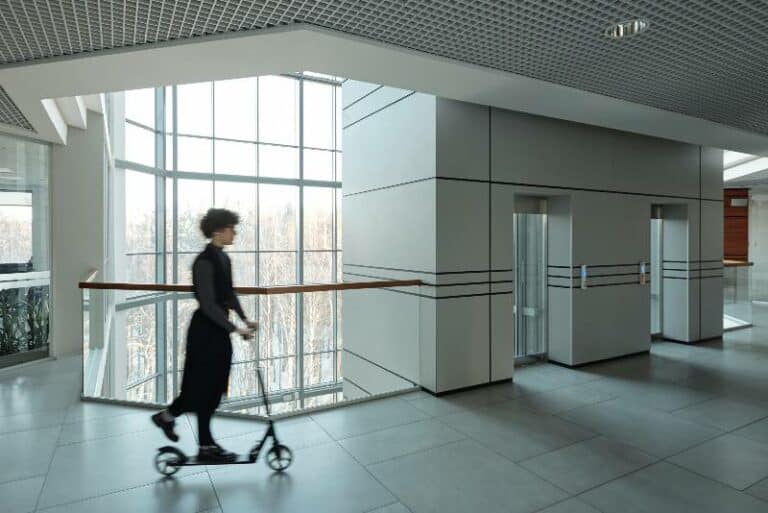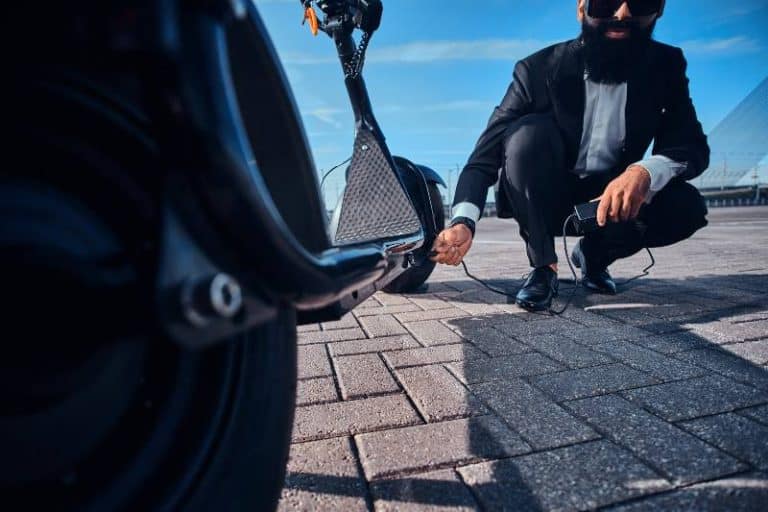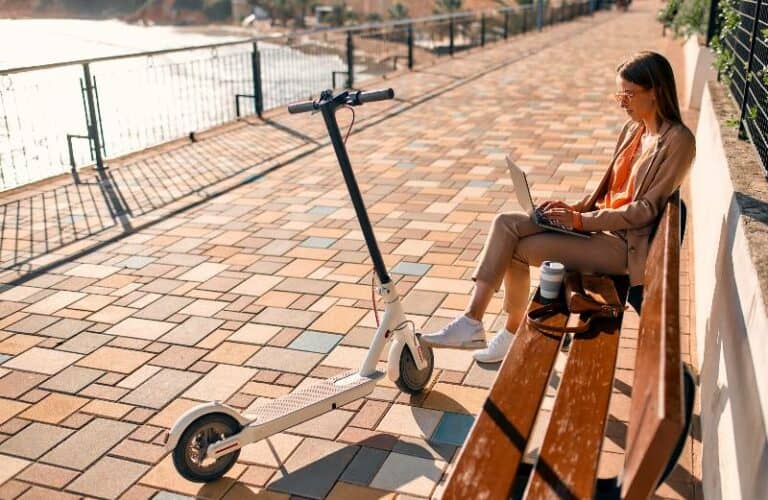My Electric Scooter Won’t Turn On: What Do I Do?
If your electric scooter won’t turn on, don’t worry! There are a few things that you can do to try and get it going again. In this blog post, we will discuss some common questions: why won’t my e-scooter turn on? as well as what you can do to fix the problem. We will also provide some tips for keeping your electric motor in good condition so that you don’t run into this problem in the future.
If your electric scooter won’t start, check the electric scooter’s fuse or circuit breaker and make sure the main ignition fuses are activated. If not, flip the switch and try to restart the vehicle. It needs a new fuse if it won’t turn over. It’s recommended that you have a professional replace your blown fuse.
Key Takeaways
- Check the battery. If you’ve got a dead battery, or if the battery is not fully charged, your e-scooter won’t turn on.
- If your charger is broken, it may not be providing enough power to charge your E-scooters battery. Make sure the charger is plugged into an outlet and that it is working properly before trying to charge your e-scooter again.
- Check the fuse or circuit breaker in your house/apartment building. If there is an issue with one of these components, there will be no power reaching your charger or scooter, so neither will turn on.
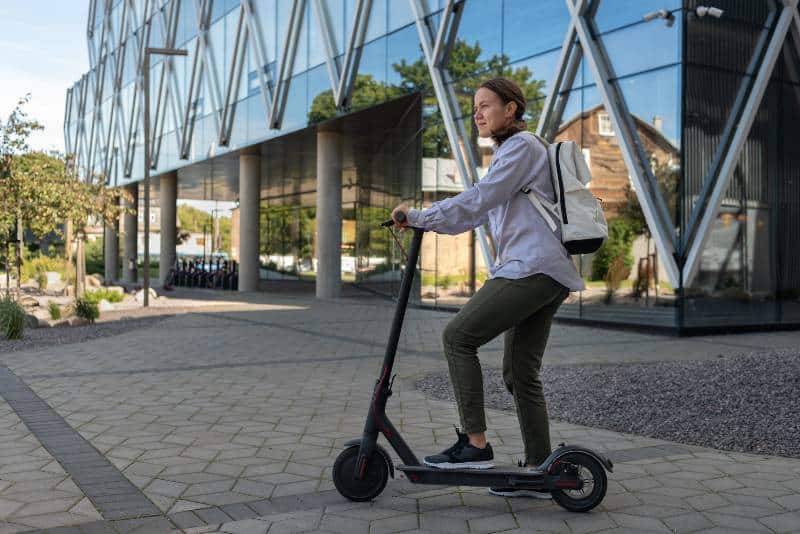
What To Do When Your E-scooter Won’t Turn On
There are a lot of reasons why your e-scooter won’t turn on. Luckily, we’ve got some tips to help you figure out what’s going on and get things back up and running in no time.
First off, make sure the battery is charged. If it’s not, plug it in for at least one hour before trying again. Make sure the charger is securely plugged in—you may be able to tell by the lights on the charger whether it’s working properly. If the charger isn’t plugged in, try using a different outlet or plugging it into a different device.
If that doesn’t solve your problem, then it could be that your battery needs to be replaced. You can usually find replacement batteries at any local hardware store or online retailer (just make sure they have the right connectors for your scooter!).
If none of this helps and you’re still having problems with your scooter, read this article to find more information.
Top 9 Reasons Why Electric Scooters Don’t Start and how to fix it
1. Check The Batteries
Surprisingly, electric scooters frequently experience a battery power failure. Battery failure, incorrect charging, extremely low temperatures, and gradual capacity loss are all potential causes.
Keep in mind that a completely discharged battery is not the same as a low battery. The difference between a low battery and a dead one is the amount of energy it can provide. The second issue is easily fixed by giving the battery a charge.
The Solution
A dead battery can only be fixed by getting a brand-new one. The battery will take longer to charge and discharge more quickly regardless of how long you leave it plugged in. Making the switch to a new battery pack solves the power problem and keeps you from having to deal with any annoyances.
Plugging the battery into different outlets may help it charge if it isn’t working. You should buy a voltmeter so you can see if the battery is being charged. In the event that charging still doesn’t work, you should get a new battery and throw the old one away.
2. Pump It Up
Some electric scooter models require that you put air into the tires before trying to turn on. This is referred to as “pumping it up.” If your scooter doesn’t have any air in the tires, this could be why it won’t start.
The Solution
To pump up your tires, check the recommended PSI (pounds per square inch) and use a hand pump to fill the tires. If you are unsure of how much air to put into the scooter, try adding one or two pumps at a time.
3. Loose Screws
Another common cause of a scooter that won’t start is loose screws and bolts. This can be the result of regular use, or it could simply mean that something has fallen off during transit. Either way, all you need to do is check for any missing parts and tighten all screws and bolts before starting up the vehicle again.
The Solution
Definitely check to make sure that all screws and bolts are firmly attached. If you notice any missing parts, they can be easily replaced by finding the right replacement part online or at a local hardware store.
4. The battery charger is defective
If your scooter’s battery is fine but it has a faulty battery charger, it will be unable to operate. This might be the consequence of a faulty charger that no longer works correctly or simply a problem with the outlet itself. In either case, you’ll need to acquire a new charger or attempt plugging the scooter into another socket to see if it functions.
The Solution
If you suspect that your charger isn’t working correctly, try plugging the scooter into another outlet. If this doesn’t work, you may need to get a new charger. This can be done by searching for replacement chargers online or at a local hardware store. You should also check to make sure that the outlet itself is in working condition.
5. Blown or Flipped Fuse
if you exceed the scooter’s weight capacity, drive up or down steep inclines, or ride through water or mud, a fuse may blow. In the first place, make sure the main ignition fuse is actually on. If it isn’t already, turn it on and start the vehicle. If the scooter won’t start, the problem could be a blown fuse. A blown fuse can be identified by removing it from its box and holding it up to the light to inspect the internal connection for signs of burn. A multimeter can also be used to verify conductivity.
The Solution
If you suspect that your fuse is blown or flipped, it’s best to have a professional replace it. This will ensure that the new fuse isn’t also malfunctioning, which can be very dangerous if left unresolved.
6. The engine heats up
Overheating engines are never a welcome sight. The engine heats up when the battery gets warm. As a result, the electric scooter will stop working so that the battery doesn’t get any worse. Stop the vehicle immediately and check under the hood for signs of overheating.
Get closer to your nose can smell the engine. The motor has overheated and the wires have burned if you smell something burning.
Electric scooter motors can be found in a variety of places. Some models feature built-in motors in the wheel hubs. There are also those whose back wheels are directly connected to the drive mechanism by way of a chain or belt. Powered wheels can be found in the front and back of some high-end scooter models.
Overheating motor problems are notoriously difficult to resolve quickly. Your local electric scooter repair shop may become a necessity if your motor overheats frequently.
The Solution
If you experience regular overheating issues with your electric scooter, it is best to take it to a professional repair shop. This will ensure that the problem is properly diagnosed and resolved in a timely manner. Some possible causes of engine overheating include faulty wiring, clogged cooling vents, or insufficient lubrication. It is also important to regularly maintain your scooter’s motor by checking all moving parts for signs of wear, rust, or other damage. Additionally, it is important to regularly charge your battery and keep the engine clean from debris.
7. The battery dies
Issues with dead batteries are common and should not be treated urgently. Charging and discharging times will increase with a dying battery pack for an electric scooter. This will continue until the organism is completely lifeless and unresponsive.
The Solution
Lithium-ion batteries reduce the frequency of a dead battery in electric scooters. It takes between 300 and 500 charges to deplete a Li-ion battery, and that battery only lasts for about two to three years. It won’t “memorize” its charge cycles as a nickel-metal hydride battery would.
The battery may need to be charged for longer to provide sufficient power for the scooter. However, that is only a temporary fix. When a battery dies, a new battery pack is the best solution.
8. The Kill Switch Is On
A kill switch is a feature found on some electric scooters that are designed to prevent the scooter from using any power at all. The kill switch is meant to be engaged while the e-scooter is not in use or being charged, as suggested by the manual.
Solution
If your engine won’t turn over, check whether the kill switch is still in the “on” position. As a result, before you start the engine, make sure the kill switch is not engaged. Unless there’s a problem with the motor, your scooter should be able to start.
9. The Motor Has Overheated
Overheating engines are never a welcome sight. The engine heats up when the battery gets warm. As a result, the electric scooter will stop working, the circuit breaker might have been tripped too. Stop the vehicle immediately and check for signs of overheating.
Get closer to your nose can smell the engine. The motor has overheated and the wires have burned if you smell something burning.
The Solution
Electric scooter motors can be found in a variety of places. Some models feature built-in motors in the wheel hubs. There are also those whose back wheels are directly connected to the drive mechanism by way of a chain or belt. Powered wheels can be found in the front and back of some high-end scooter models.
Overheating motor problems are notoriously difficult to resolve quickly. Your local electric scooter repair shop may become a necessity if your motor overheats frequently.
Faulty speed controller
The speed limiter regulates your velocity so that it remains constant within a set range. It’s a vital component of your e-scooter, but it can easily be broken if you’re not careful.
The Solution
How do you prepare a broken electric scooter speed controller?
Disassembling the speed controller is the first step to fixing a broken speed controller. Finally, reconnect any loose wires or replace any broken ones. Next, put it back together as before. Be cautious when putting things back together to ensure your own safety and the safety of others.
When all else fails, get help
Contact the manufacturer
The manufacturer of your scooter if you are having significant difficulty diagnosing and fixing the problem yourself. They will have the expertise to identify potential causes, recommend solutions, and perform any necessary repairs. If possible, take your e-scooter to a certified electric scooter repair shop for professional assistance. With proper maintenance and care, your electric scooter should continue to provide years of reliable service.
Find a repair shop
Find a shop near you and make an appointment for a professional evaluation of your scooter’s motor. In the meantime, be sure to keep your scooter clean and well-maintained, avoid overloading it with heavy loads, and always charge the battery regularly. With these tips, you should be able to avoid common problems and get the most out of your electric scooter.
Electric Scooter Won’t Turn On FAQs
How do I reset the battery on my electric scooter?
On most electric scooters, the reset button is situated close to the handlebars, right next to the power switch. Electric scooter problems? Try turning it off and back on again. Finding the reset button and pressing it should do the trick. It could take a few seconds of holding it down.
How do you fix an electric scooter that is not charging?
If you’re lucky enough to have an electric scooter, you probably enjoy zipping around town without having to worry about pedaling. However, one of the most frustrating things about owning an electric scooter is when the battery runs out of juice and won’t charge up again. If you’re in this situation, don’t despair! There are a few things you can do to try to fix the problem.
First, take a look at the battery pack’s history. If it’s been through a lot of charging cycles, it may be reaching the end of its life and will need to be replaced. Alternatively, if the battery has been exposed to extreme temperatures, that could also affect its ability to hold a charge.
Next, check the condition of the battery. Make sure there is no visible damage and that all the connections are secure. If everything looks good there, try testing the charging port with a multimeter. If the port is damaged or corroded, it will need to be repaired or replaced.
Finally, if the port is in good condition and the battery still isn’t charging, try testing the charger. It’s possible that it has failed and will need to be replaced.
Is there a reset button on an electric scooter?
On most electric scooters, the reset button is situated close to the handlebars, not far from the power switch. You may be able to fix your malfunctioning electric scooter by performing a reset. You need only locate the reset button and press it to accomplish this. Sometimes a longer period of pressure is required.
How do you check an electric scooter battery?
First, start up your scooter and multimeter. Then connect the red probe of the multimeter to the positive terminal of the battery and the black probe to the negative terminal. Checking an electric scooter battery is simple with this method.
When the multimeter is connected, it will display a number in volts. It should be equal to or greater than the voltage of your battery If it’s less, this indicates that the battery is on its way out and must be replaced. Checking your scooter’s battery on a regular basis ensures that it remains in good working order and extends its life span.
How do I know if my scooter fuse is blown?
remove the fuse and set it in a safe place. You may need a mini screwdriver to take off the cover of the fuse holder. Check if the wire that is attached to needs be checked; generally, this means replacing it.
Conclusion
We hope this article was helpful and that you were able to get your scooter up and running in no time. If you’re still having trouble or if something doesn’t seem right, reach out to the company you bought your scooter from or take it to a nearby electric bike shop for help. In the meantime, happy riding!
